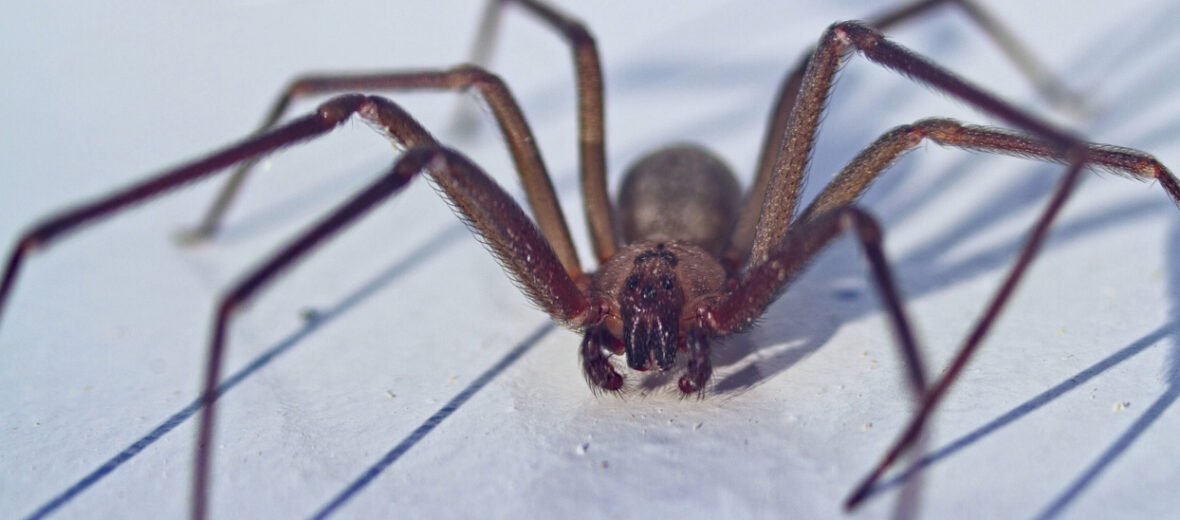
The brown recluse or as it’s sometimes called the ‘fiddleback’ or ‘violin’ spider, because of the violin-shaped marking on its dorsum, bites can cause ulcerative lesions that can lead to septicemia. The majority of times the bites are rare and harmless. These spiders live throughout the midwest, but can literally be found inmost parts of the United States and Canada.
First the Stats…
Scientific name: Loxosceles reclusa
Length: Up to .79 inch
Legspan: Up to 1.2 inches
Lifespan: Up to 3 years
Now on to the Facts!
1.) One way to identify a recluse is the violin shaped marking on the dorsum or cephalothorax. (Their back.) Another way is the fact that recluse spiders only have 6 eyes. Most other spiders have 8.
2.) Brown recluse spiders live outdoors under rocks, logs, woodpiles and debris. They can also live in dark corners of your garage, basement, or attic.
3.) Symptoms of a brown recluse bite may include itching, fever, chills, sweating, nausea, and a general feeling of discomfort or sickness.
4.) Approximately 90% of recluse bites heal without issue. It’s the 10% that can be quite dramatic!
5.) Bites do not always result in a large, necrotic lesion with surrounding tissue death. Most times, the bite goes unnoticed and only results in a small red bump.
But wait, there’s more on the brown recluse!
6.) If an allergic reaction occurs, the victim of the bite will typically develop an ulcerative, non-healing wound that results in tissue death and can even lead to septicemia, in some cases. Typically, an envenomated person or animal will receive antibiotics as a precaution.
7.) Females can produce 2 – 5 egg cases, each containing 20 – 50 spiderlings, during their lifespan.
Did you know…?
Brown recluse venom is cytotoxic and hemolytic. It contains at least 8 components, including enzymes like alkaline phosphatase, deoxyribonuclease, hyaluronidase, lipase, and ribonuclease. These toxins cause damage to blood vessels and tissue necrosis.
8.) Like other spiders, spraying pesticides to control them does little, if anything at all. The only way to kill them with poisons is to spray them directly. However, since these spiders like to eat dead insects, the poison used to kill their food source might indirectly kill the recluse.
9.) Brown recluses don’t use webs to snare prey. They will hunt them down. They also prefer to eat dead insects.
10.) Recluse spiders, like many spiders, prefer to live alone. So their name is quite appropriate.
Now a Short Brown Recluse Video!
Also, check out the Critter Science YouTube channel. Videos added frequently!
Want to suggest a critter for me to write about? Let me know here.



